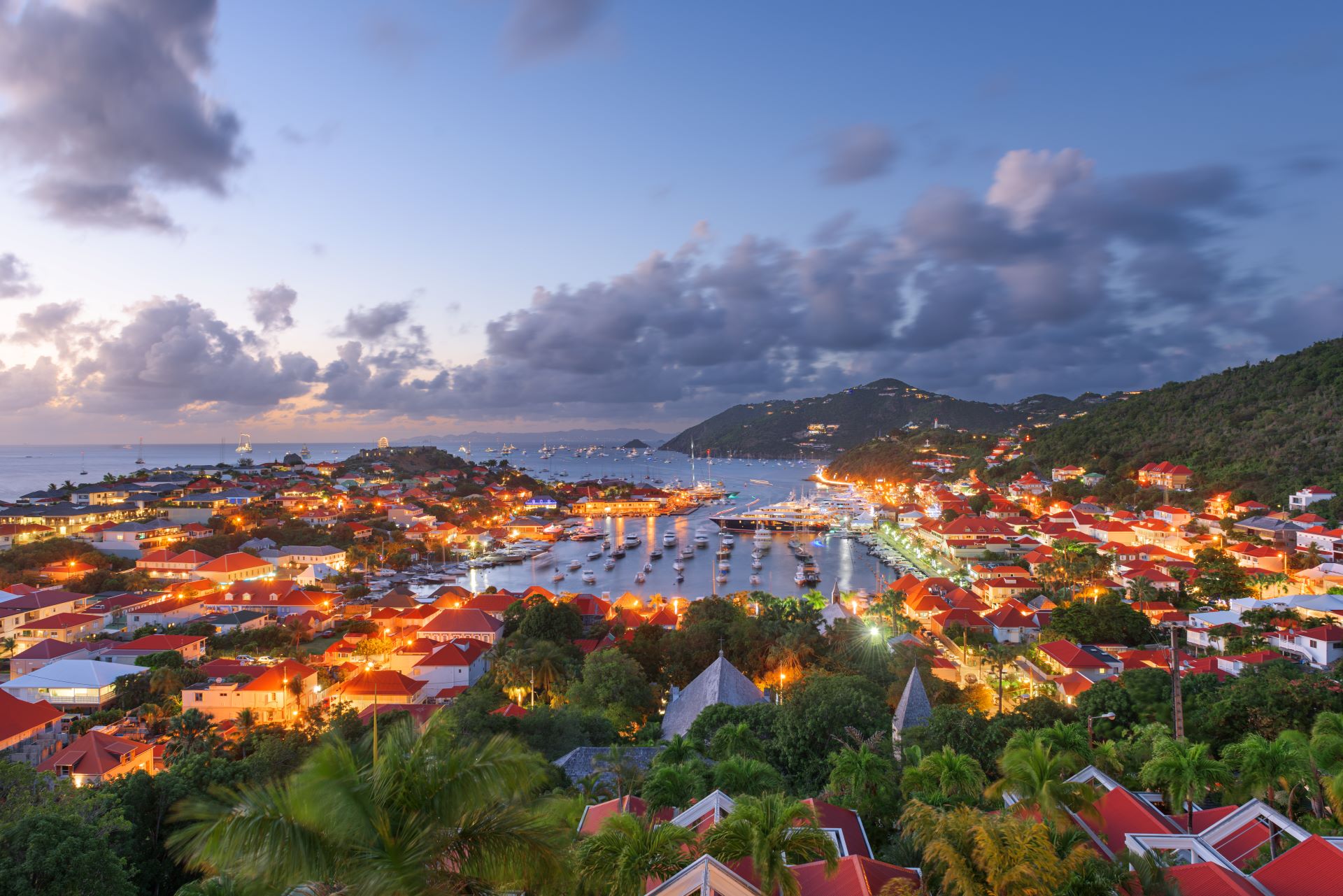
The Impact of Hurricanes on St. Barth’s Businesses and How to Stay on Top
St. Barthélemy, often referred to as St. Barth’s, is a jewel of the Caribbean known for its stunning beaches, luxury resorts, and vibrant culture. However, like many Caribbean islands, it is no stranger to the devastating effects of hurricanes. Hurricane Ivan, one of the most powerful storms of the early 2000s, left a lasting impact on St. Barth’s, reshaping its landscape, economy, and approach to disaster preparedness. With help from financial and marketing experts, St. Barth’s business owners can help secure their company even when disaster strikes.
Hurricane Ivan: A Brief Overview
Hurricane Ivan formed in early September 2004 and quickly gained strength, reaching Category 5 status with sustained winds of up to 165 mph. Although St. Barth’s was not in the direct path of the hurricane, the island experienced severe weather conditions, including heavy rainfall, strong winds, and large swells. The storm caused significant damage to infrastructure, homes, and businesses, disrupting the lives of residents and the island’s thriving tourism industry.
Impact on Businesses and Tourism
The economic impact of Hurricane Ivan on St. Barth’s was profound, particularly for the island’s tourism-dependent businesses. Hotels, restaurants, and shops faced damage from flooding and high winds, leading to costly repairs and extended closures. The destruction of key infrastructure, such as roads and utilities, further hampered business operations and deterred tourists from visiting in the aftermath of the storm.
The tourism sector, a cornerstone of St. Barth’s economy, was hit hardest. The hurricane coincided with the start of the island’s peak tourist season, leading to cancellations and a sharp decline in visitor numbers. The reduced tourism revenue not only affected businesses directly linked to the industry but also had a ripple effect on the broader economy, including local suppliers, transport services, and construction companies involved in rebuilding efforts.
In the months following Hurricane Ivan, the recovery of St. Barth’s tourism industry was slow but steady. The resilience of the local community, coupled with international aid and support from the French government, played a crucial role in rebuilding the island’s infrastructure and restoring confidence among visitors. However, the experience of Ivan served as a stark reminder of the vulnerability of Caribbean islands to natural disasters and the need for robust disaster preparedness and response strategies.
Understanding the Hurricane Season in St. Barth’s
St. Barth’s, like other Caribbean islands, experiences a defined hurricane season that typically runs from June 1 to November 30. During this period, the island is at risk of tropical storms and hurricanes, which can range from mild disturbances to catastrophic events like Hurricane Ivan. The intensity and frequency of hurricanes can vary from year to year, influenced by factors such as ocean temperatures, atmospheric conditions, and climate change.
The region’s hurricane season poses a significant challenge for businesses, particularly those in the tourism sector, where the uncertainty of weather patterns can affect travel plans and bookings. In recent years, the increasing frequency and severity of hurricanes have heightened concerns among business owners about the sustainability of their operations and the long-term impact on the island’s economy.
Strategies for Business Preparedness and Resilience
In light of the recurring threat of hurricanes, businesses in St. Barth’s have adopted various strategies to protect themselves and ensure continuity in the face of natural disasters. These measures not only help mitigate the immediate impact of hurricanes but also contribute to long-term resilience and recovery.
- Comprehensive Risk Assessment and Planning: Businesses must conduct thorough risk assessments to identify potential vulnerabilities in their operations. This includes evaluating the structural integrity of buildings, the reliability of supply chains, and the effectiveness of communication networks. Developing a comprehensive disaster response plan that outlines specific actions to be taken before, during, and after a hurricane is essential. This plan should include evacuation procedures, backup systems for critical data, and contingency plans for maintaining customer service and operations.
- Investing in Infrastructure and Technology: Strengthening physical infrastructure is a key component of disaster preparedness. Businesses should invest in hurricane-resistant building materials, secure storage solutions for inventory, and backup power generators. Additionally, leveraging technology can enhance a business’s ability to respond to a disaster. Cloud-based data storage, remote work capabilities, and real-time communication tools ensure that operations can continue even if physical premises are damaged.
- Insurance Coverage and Financial Planning: Having adequate insurance coverage is crucial for businesses in hurricane-prone areas. Policies should be reviewed and updated regularly to ensure they cover both physical damage and business interruption losses. Financial planning for St. Barth’s businesses is also essential, such as setting aside emergency funds to cover unexpected expenses during recovery. Consider employing a company with trusted financial services in St. Barth’s to help you establish and maintain an emergency fund. Establishing lines of credit or accessing disaster relief funds can provide additional financial support when needed.
- Community Collaboration and Support: Building strong relationships within the local community is an important aspect of disaster preparedness. Businesses can collaborate with local authorities, other businesses, and non-profit organizations to develop coordinated response efforts. Community support networks can provide valuable resources, such as shared supplies, temporary shelter, and volunteer assistance during recovery.
- Clear Communication and Customer Engagement: Maintaining clear and transparent communication with customers before, during, and after a hurricane is vital. Businesses should use multiple channels, such as social media, email, and websites, to provide updates on the situation. Keeping customers informed about reopening plans and any changes to services helps maintain trust and loyalty, even in the aftermath of a disaster. Businesses in St. Barth’s should have established marketing strategies in place before disaster strikes.
- Adapting Business Models and Services: Flexibility is key to resilience. Businesses that can adapt their models and services to changing circumstances are more likely to survive and thrive. For example, offering virtual experiences or diversifying into new markets can help control the loss of revenue during periods when tourism is affected by hurricanes. Having user-friendly, fully optimized websites with off-site servers ensures that operations can continue even if physical premises are damaged.
- Sustainability and Climate Resilience: In response to the growing threat of climate change, many businesses are integrating sustainability practices into their operations. This includes adopting energy-efficient technologies, reducing carbon footprints, and participating in environmental conservation efforts. By promoting sustainable tourism and business practices, St. Barth’s can enhance its appeal to environmentally conscious travelers and contribute to the long-term resilience of the island.
Building a Resilient Future
The impact of Hurricane Ivan on St. Barth’s serves as a powerful reminder of the importance of preparedness and resilience in the face of natural disasters. While the immediate aftermath of the hurricane was challenging for the island’s businesses and tourism sector, the lessons learned have driven significant improvements in disaster response and recovery strategies.
As St. Barth’s continues to navigate the challenges of hurricane season, the island’s commitment to resilience, innovation, and community collaboration will be essential in protecting its economy and ensuring a sustainable future for its residents and visitors alike.
Costa Consultants is committed to helping St. Barth’s business owners with marketing and financial services that can help weather any storm. Check out our finance and marketing services in St. Barth’s HERE.
By Jennifer LaCharite


